Tiny Natural Homes Around the World.
|
|
|
 |
|
|
|
|
|
|
|
An introduction by Tim Guiles...
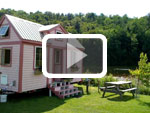
|
Wants are limitless, needs are finite and quite
easily met.
|
| |
|
|
Tim lives in a tiny home in Vermont, USA. His taste for
living in small spaces began in 1988 when he sold his
apartment to live on a sail boat. After some graduate
schooling in environmental engineering, he rekindled his
interest in simple living and moved into a small solar
home in Vermont in 1992. |
|
|
|
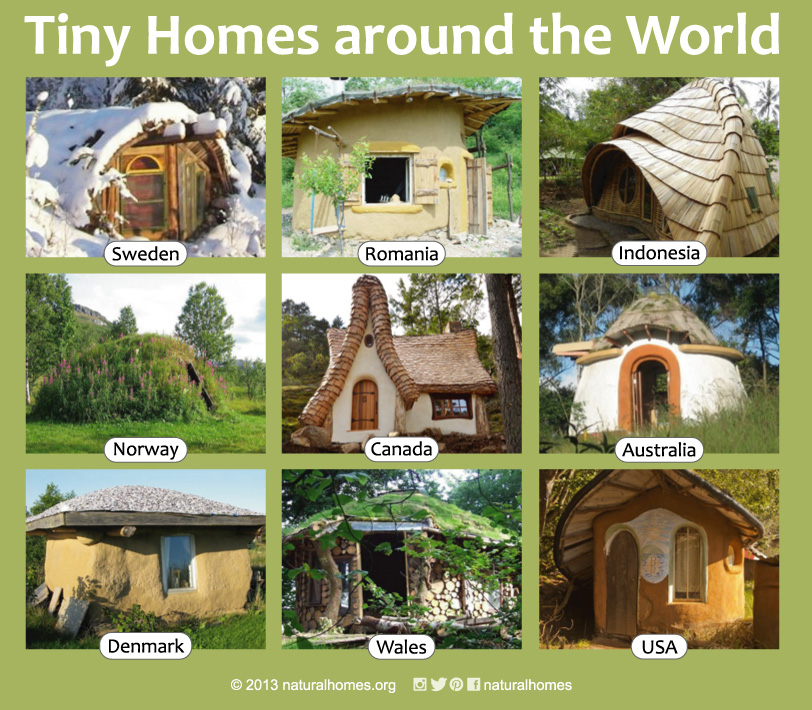 |
|
|
|
|
|
|
|
In 2004 he decided to build a little cabin, a
simple 8’ by 12’ box. He lived in that small space for 2 years and
learned a lot about what didn’t work in small spaces. Then he
discovered
Jay Shafer who had clearly figured out how to make
inviting, warm, functional spaces that felt like home.
After building and living in a cabin designed by Jay for a
year Tim became convinced that this kind of living space
should be available to more people that he started his own
company to promote the small living philosophy. Tim says,
"Wants are limitless and in fact, are part of what poisons our
culture. Needs are finite and quite easily met." Here are
some tiny homes around the world. |
|
|
|
|
|
|
|
|
|
|
|
|
|
|
|
 |
|
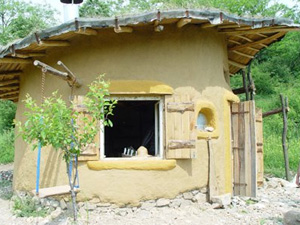 |
|
 |
|
| |
|
|
|
|
|
It took Daniel two months to build his tiny home
in Sweden with friends in 2008. Taking inspiration
from Sami torvkata (turf hut)
and yurts, Daniel cut a 3m x 3m hole into a sunny hillside 1.5m
deep. Building intuitively the house grew quickly. The home, which
cost nearly nothing to build, stays warm in the winter, cool in
the summer.
| |
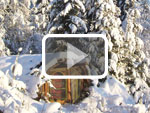
|
|
| |
Daniel's story Part
1 |
|
|
|
This tiny cob house in the lush green
hills of Romania on the banks of the Nera River was built by
Ileana Mavrodin. You can see more of the home on her website at
www.casa-verde.ro and take a closer look inside in the video
below. Ileana has now added extra space to her tiny home. She
gives a tour in this video.
| |

|
|
| |
Ileana talks about her cob home |
|
|
|
This is one of the bamboo classroom pods at the
Green School
in Bali. Green School is home to some wonderfully organic shapes
all made from bamboo. Bamboo grows incredibly quickly. has a
higher tensile strength than many alloys of steel and a higher
compressive strength than many mixtures of concrete.
| |
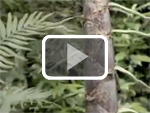
|
|
| |
Bamboo grows very fast |
|
|
|
| |
|
|
|
|
|
|
|
|
|
|
|
|
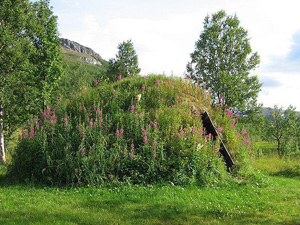 |
|
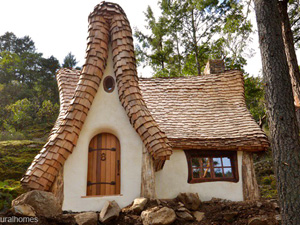 |
|
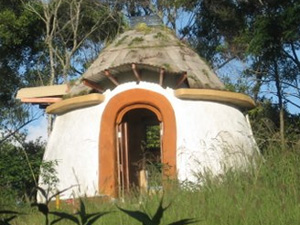 |
|
| |
|
|
|
|
|
If the ground around this tiny home wasn't so
flat you would probably walk past it thinking it was a hill. This
is one of the Sami people’s Goahti (a turf home, also known as a
Gamme in Norwegian) used as a summer residence (Siida) at Gamtofta
near Sorreisa, Norway. You can stay in these Sami homes, sleeping
on reindeer skin beds warmed by an open stone circle fire, while
you attend a workshop in
Sami crafts (duodji). Here’s where you can visit the
tiny
home and here's how you can
build your own Goahti. |
|
On Canada's Vancouver Island you will find a beautiful example
of tiny storybook architecture created by
Lindcroft. The cottage, called Winckler, was built with local douglas fir,
logged and cut with a portable sawmill. The roof is cedar shingles
(shakes) hand split and steamed to make them supple enough to
follow the curves of the roof.
| |
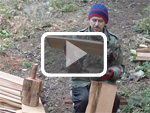
|
|
| |
Making cedar shingles |
|
|
|
This is the earthbag dome at the Permaforest Trust (now renamed
Pattern Dynamics) near Brisbane, Australia. A naturally built
dome's roof is especially difficult to protect from rain. This
design uses a clever system of hand sculpted fins that channel the
rain away from the walls of the dome into drain pipes to the
ground. Channelling water with fins is a technique used in the
traditional homes of Asir province in Saudi Arabia. You can read about
each stage of the building process in this PDF document:
building with earthbags. |
|
| |
|
|
|
|
|
|
|
|
|
|
|
|
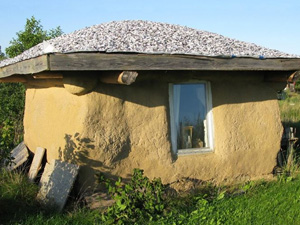 |
|
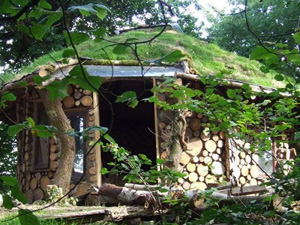 |
|
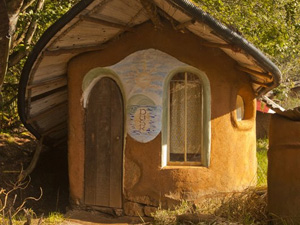 |
|
| |
|
|
|
|
|
This is Poula's tiny straw bale Smurf House.
She built it as a temporary place to live while she was building
her
straw bale spiral home inspired by the shape of a shell she
found on a beach in Malaysia. The Smurf House is now a guest room for
people who come to learn about natural building at the ecoVillage
in Denmark where she lives. |
|
This is
Tony
Wrench's cordwood roundhouse den in Wales. Like many of Tony's
homes it's based on a henge of roundwood timbers with the ends
charred and daubed in pitch before being buried in the ground. The
roundhouse cost Tony around £100 ($150) to build using timbers
from the woodlands that surround his home and some reclaimed
windows. |
|
Hidden away in a lush Oregon woodland near
Coquille, OR, USA is a collection of tiny cob homes with names
like Dawn and Dusk built by
Cob Cottage
Comapany. You can learn about their tiny homes in this video.
| |
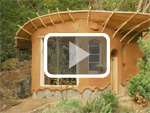
|
|
| |
Off the treadmill with
Ianto and Linda |
|
|
|